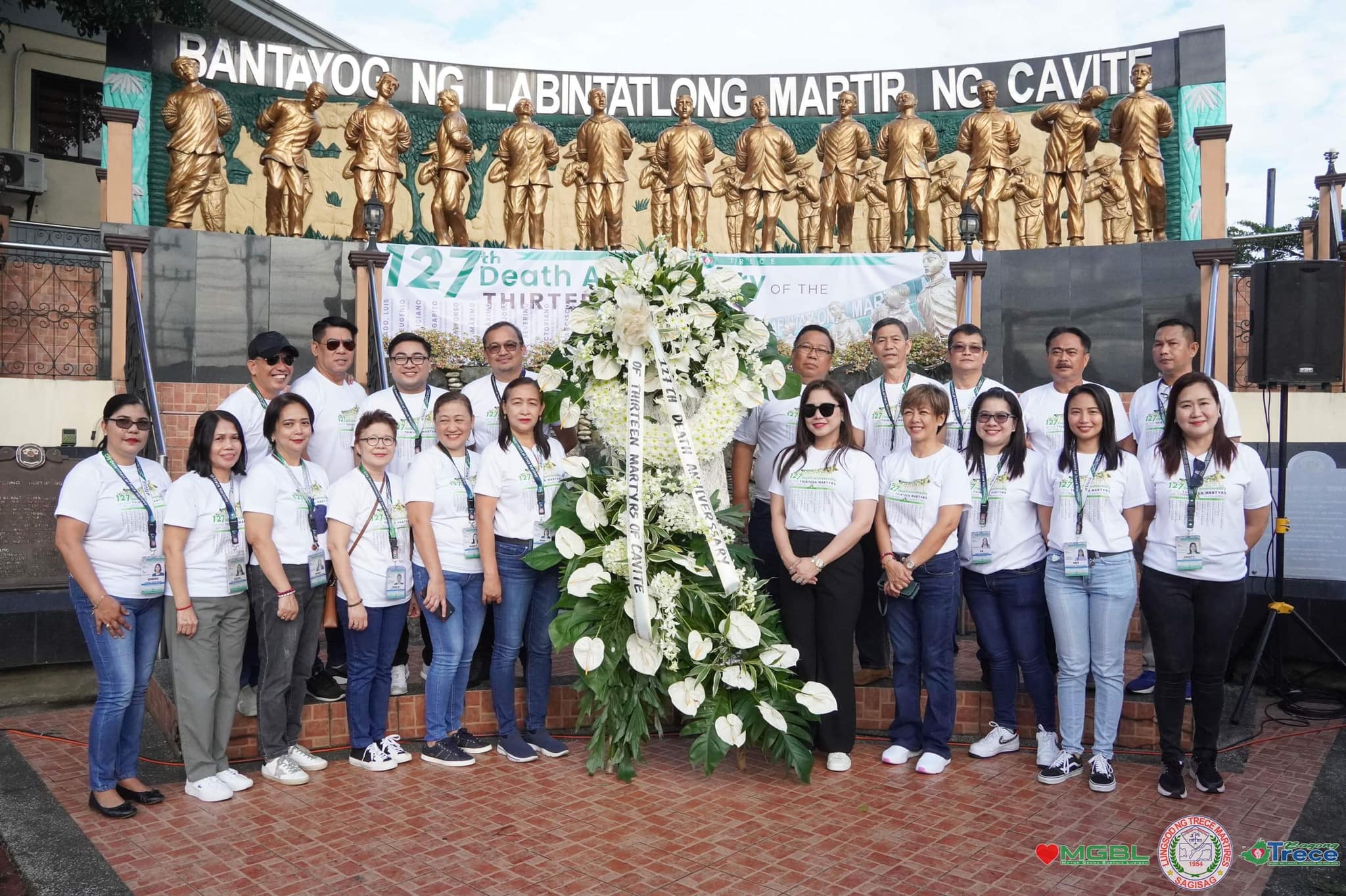127th death anniversary of the 13 Martyrs of Cavite commemorated
At A Glance
- Screenshot of the reenactment video courtesy of Edwin S. Guinto (MANILA BULLETIN)
CAVITE – The local government unit (LGU) of Trece Martires commemorated on Tuesday, Sept. 12, the 127th death anniversary of the 13 patriots the city was named after.
The LGU held a thanksgiving mass and a wreath-laying ceremony at the Bantayog ng Labintatlong Martir ng Cavite.

Photo from Mayor Gemma Buendia Lubigan's Facebook page (MANILA BULLETIN)
“The martyrs' lives serve as a beacon of inspiration,” Mayor Gemma Buendia Lubigan wrote in a Facebook post.
“Let us honor their memories by embodying their principles; courage, selflessness and hope, and working tirelessly for the betterment of our beloved city.”
Executed for cooperating with the Katipunan in 1896, the 13 Martyrs are Luis Aguado, Eugenio Cabezas, Feliciano Cabuco, Agapito Conchu, Alfonso de Ocampo, Antonio de San Agustin, Maximo Gregorio, Maximo Inocencio, Jose Lallana, Severino Lapidario, Victoriano Luciano, Hugo Perez, and Francisco Osorio.
Reenactment of the 13 Martyrs' execution
In Cavite City, the Republica Filipina Reenactment Group (RFRG) restaged the sentencing and execution of the 13 Martyrs at Plaza de Armas. RFRG is an organization of history enthusiasts who reenact key events in the Philippine Revolution and the Philippine-American War.

Screenshot of the reenactment video courtesy of Edwin S. Guinto (MANILA BULLETIN)
The martyrs died by firing squad outside Fort San Felipe in the former capital of the province, then called Cavite Puerto. It was not until 1954 that Trece Martires City was chartered and the provincial seat was transferred from Cavite City to Trece Martires.
RFRG member Bernard Supetran told the Manila Bulletin that their group based their reenactment on intensive historical research.

Image courtesy of Edwin S. Guinto (MANILA BULLETIN)
“We also did it last year, so it was a rerun. Inenhance lang namin 'yung ginawa last year (We only enhanced what we did last year),” the columnist and history afficionado said.
Supetran also shared an interesting tidbit they uncovered during their research concerning an individual who came very close to being executed alongside the 13 Martyrs.
“Si Julian Felipe was among the original who were arrested along with the 13 Martyrs, maraming hinuli. Pero 'nung nilitis, si Julian Felipe, napakawalan (Many were arrested. But after the trial, Julian Felipe was released),” Supetran said.
“We would have had a different-sounding national anthem!”
The 13 Martyrs were executed on Sept. 12, 1896 while Gen. Emilio Aguinaldo commissioned Felipe to create a march for the revolutionists on June 5, 1898. The music was first heard publicly on June 12, 1898, as Aguinaldo proclaimed Philippine Independence in his home in Kawit.